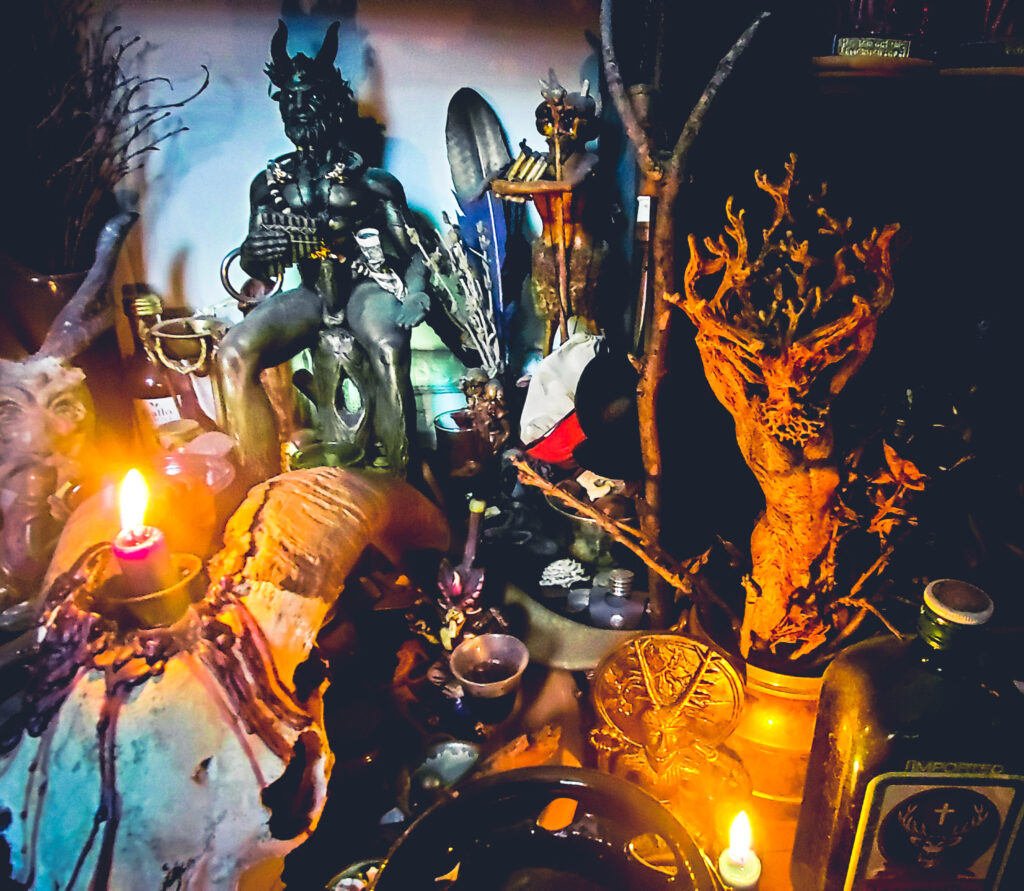
Within the traditions of witchcraft, Wicca or otherwise, there is often a common God archetype that unites these practices. This type of deity is collectively called “The Horned God”. Of the many Horned Gods we find the Devil, Bucca, Herne, Pooka, Puck, the Greenman, and the most famous two, Pan and Cernunnos, Who are the subjects of this article. While many witches and pagans are quick to call these Gods different incarnations of the same God, this is actually based on a very recent, and very complicated idea that was popularized by none other than Gerald Gardner.
Before we can unravel the tangled knot of faux academia that is the Pan/Cernunnos syncretism we need to first understand the history of these two Horned Gods. The first thing to note is that only one of these Gods is actually “horned”, the other is “antlered”. While this seems like a trivial exercise in semantics, it will be important later. To get started, lets explore the Goat-Horned God Himself, Pan!
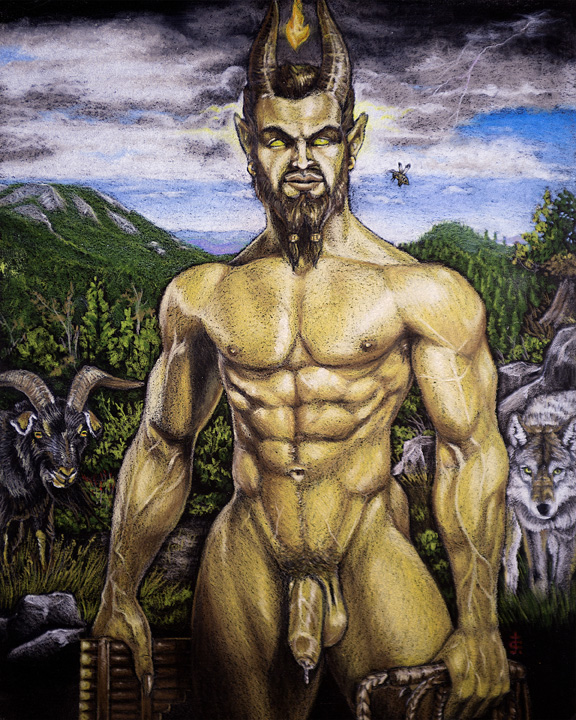
In southern Greece there is a remote wilderness that is set among unforgiving mountains. A harsh landscape that would be inhospitable to most. This land, and its people, would take hold of the Greek imagination and birth some of the most savage, and powerful myths in the ancient world. They say that the Arkadians are “proselenoi”, or “older than the Moon”, born from the Earth Herself, strengthened by acorns of the mighty Oak! From this same land was born a strange and terrifying God with the horns and hooves of a goat, an insatiable sex drive, and a love for dancing and music. His name is Pan, which means “pasturer” or even “guardian” from the early Greek “Παων”, or “Paon” which comes from the even earlier Indo-European “Péh₂usōn”, the same God as the Vedic Pushan, the “péh₂” meaning “to protect” or “nurture” cattle. As His own God, Pan’s worship is attested to extremely early in Greek history, at least as far as the Mycenean settlement in about 1,600 BCE, with His first mention in cult form dating from votive inscriptions around 600 BCE. It is believed that the earliest cult viewed Pan as almost fully goat in form, with the exception of being able to play music and walk upright, much like He is depicted on the 5th century BCE Attic volute krater fragment. In fact it is around that time, precisely in 490 BCE, that His cult reached the Greek mainland to commemorate His apparition appearing to Pheidippides on his way to ask the Spartans for aid during the Battle of Marathon.
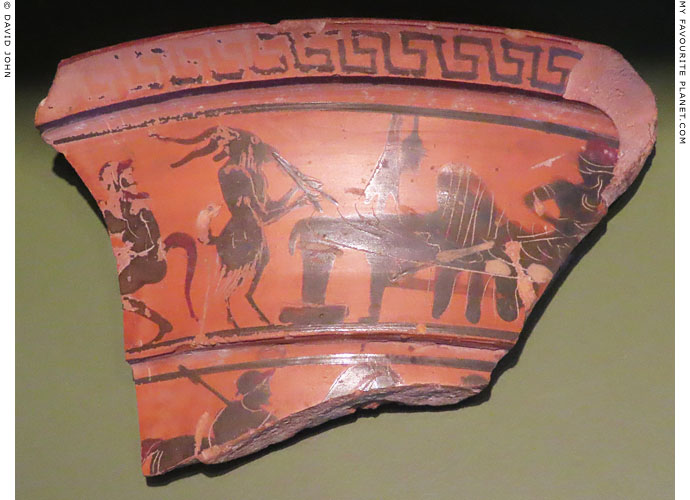
From that moment on Pan maintained an extensive cult in the Greek world, and beyond, with temples found everywhere from Egypt, Persia, and throughout mainland Europe. The mainland Greeks gave Him new Olympian parentage, Hermes and Maia, or a nymph, lending some of His more phallic attributes to His new father, evident in the Herms of Archaic Greece shortly after Pan’s cult was introduced. So what happened when this wild God met with civilization? Naturally, He challenged it. Pan isn’t the gentle, fluffy God many view Him as. He, like the land He comes from, is quite savage and frightening. He represents unrestrained Nature, the Demiurge of all elements in their most primal and cosmic form. “Laughter Loving” Pan is the laughter of frenzy and madness, which He inflicts on those who meet His wrath. He is the force that causes sudden unseen fear in flocks of animals, that terrifying chill when travelers pass through His domain.

One of Pan’s most recognized functions rules over lust and sexuality. The Greeks recognized sexuality as a gift from the Gods. It was not only pleasurable, but it propagated society and civilization. So it is no wonder sexual Gods were and still are among the most popular. But there is a striking difference between the rather civilized sex Gods, such as Aphrodite and Eros, and the wild sex God Pan. While the former rules over sex that is romantic, passionate, and procreative, Pan’s sexual nature is intense bestial urge, self gratifying, and aggressive. Pan was often described as being the shepherd’s “trupanon” or hole-borer. This makes Him quite literally the shepherd’s erect penis. To understand Pan’s sexual nature we have to put ourselves in the mindset of the ancient Arkadian shepherd. Arkadia was extremely remote and mostly wild, and a lonely shepherd would find himself overcome with insatiable urge that he most likely would not be able to overcome through the amorous coupling in the realm of Aphrodite or Eros. He would have to release his seed by masturbating (an act that is said to have been taught to humankind by Pan), committing bestiality, or finding any willing partner, male or female. This is a curious juxtaposition to Pan’s procreative powers in animals, mating being ultimately about fertilization rather than gratification as we see in His role of Lord of Lust in humankind.
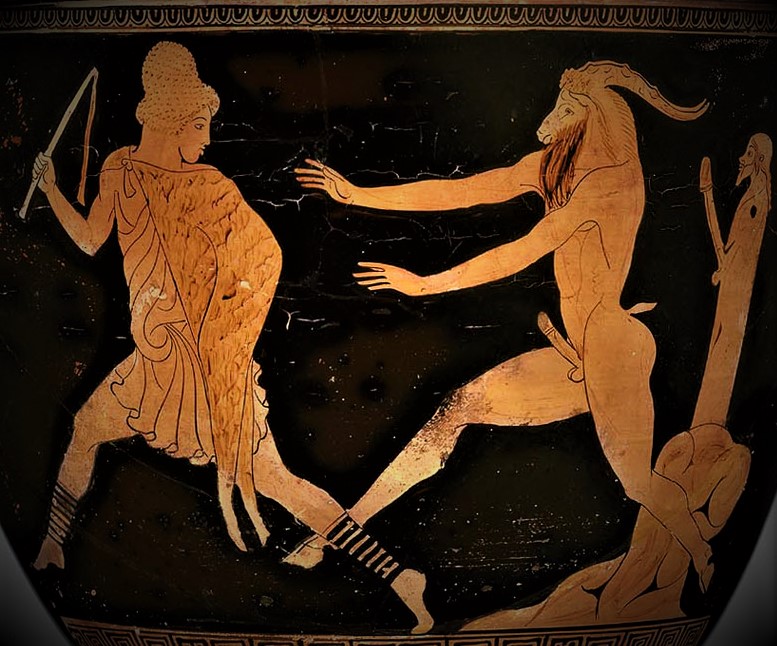
Pan’s most striking symbola that has endured throughout history is the erect phallus. The God is rarely depicted clothed, and sexuality in all its carnal forms are His. He waits in the shadows ready to leap out upon unsuspecting shepherds, instantly overcoming them with arousal. This is no more clear than on the 5th century BCE red vase where a goat headed Pan leaps from a Herm, with a large fully erect phallus, chasing after a young shepherd with the intent to forcefully take him, as sexual urge often does. But it is in that lust that the shepherds developed their skills in dancing and music, something the savage Arkadians were revered for. These intense surges of hormones and energy also alter the mind itself, and through ritual they can easily be swayed into a powerful trance. It is in this trance Pan manifests prophecy. This is the same trance that comes from the beating of the drums, and music in general. When witches cast our magic and lose ourselves in dance, that is Pan, and like the lust of sexual gratification, it easily and quickly overcomes us, taking us with it into an altered state of consciousness.

This brings us into the next domain of Pan. He rules over natural cures which He reveals through dreams, as well as the potent power of flora, more so those of the forest floor, but especially fungi and mushrooms. These phallic lifeforms are not only highly curative, but some induce powerful altered states! Psychedelic mushrooms have been used for millennia in magic and ritual. It is believed the Greeks used them in their sacred brew “kykeon” which initiates of the Eleusinian Mysteries would drink to commune with the Gods. In places like Africa the mushrooms are consumed to aid in nocturnal hunting as a way of heightening the senses. And in the witchcraft of cultures around the world such as Central and South America, mainland Europe, and the Middle East, they are invaluable allies in manifesting unseen forces. Like Dionysos, Pan has a hand in substances that alter consciousness. But it wasn’t just substances, it is also psychological states, liminal places between pleasure and pain, sanity and madness, and sleep and awake. In fact, rituals to Pan are often performed in a state of sleep deprived trance where participants revel in preparation all night, feasting and drinking wine until the early hours when Night meets Day.
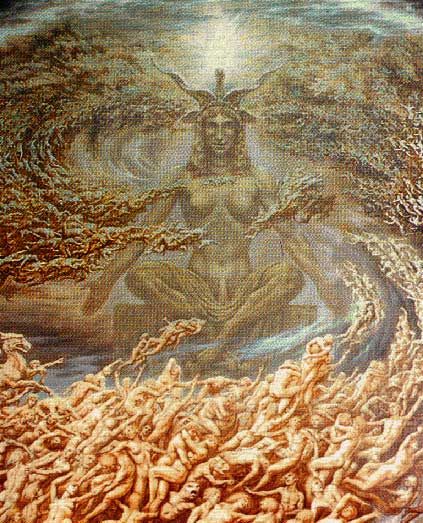
Aside from all this, there is an extensive background of myth, ritual, and cult surrounding Pan and His exploits. He has endured throughout history, becoming the Goat of the Sabbath, God of Witches to the early Church, regaining popularity in Victorian and Edwardian England, celebrated by many occultists like Rosaleen Norton, known as ‘The Witch of King’s Cross’ (one of my personal inspirations), Elphias Levi who would use Him for his Baphomet, Aleister Crowley, inspiring artists such as Johfra Bosschart, and William Bourguereau, and authors such as Arthur Machen, becoming a powerful symbol of free will, the terrifying idea of untamed nature, and sexual liberation.
We will now travel far West of Greece to the edge of Continental Europe. It was there in France a mysterious antlered figure was discovered, Whose name was inscribed on a Roman pillar depicting not only Gods of Rome, but Gods of the Celtic Gauls. His name is Cernunnos, which roughly translates to “Horned-God” and it is on this altar, known as the “Pillar of the Boatmen”, we find the only known inscription of His name. He appears in heavy relief seated in a cross-legged position with antlers of a stag adorned with rings which symbolize wealth referencing a time when coin money was not used by the Celts. Above the God is the name “Cernunnos”. While the “C” is now lost, it is well documented as being intact in 18th century illustrations of the image, so we know it said this specifically. The pillar itself dates back to the later end of the Roman occupation of Paris between 1 CE and 25 CE and is an excellent example of cultural fusion. The name itself comes from the Gallo-Roman root “Cornu” which means “antler” or “long horn”.
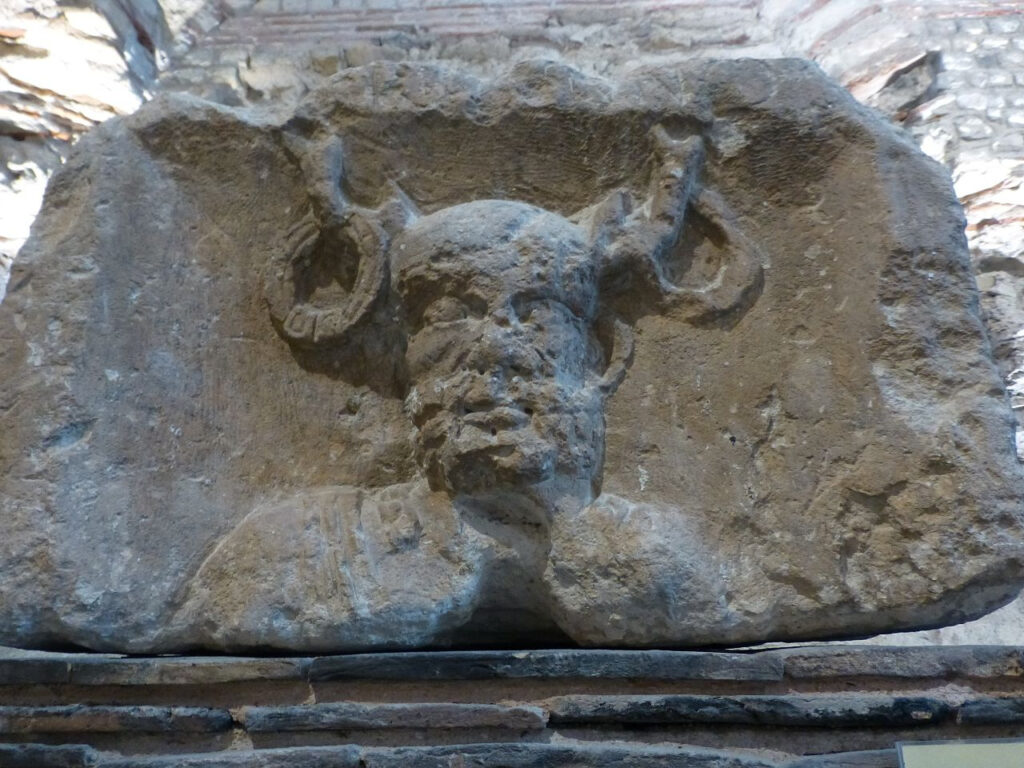
While the inscription of the name is relatively late, the antlered-God motif associated with Cernunnos is actually pretty ancient. There is a Cernunnos-like rock carving dating from between the 5th and 4th century BCE from Val Comonica in Northern Italy. Here an antlered figure is standing, dressed in what is described as a long robe with the iconic antlers and torques, even an early example of what may me a ram-horned serpent. A nude male worshiper in a much smaller scale prays to the figure which looms as a colossus before him. The only problem is there is no inscription identifying the God, and torques and antlers are a pretty common theme in Celtic art among Gods and Goddesses, as well as priests and shamans alike. Can we say for certain this is the same God Who appears on the Pillar of the Boatmen? Is this figure even a God at all?
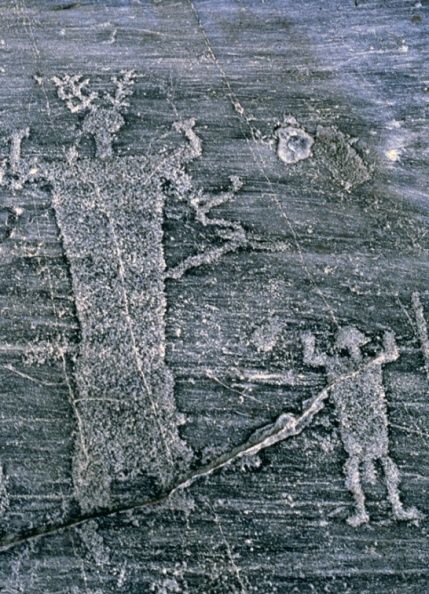
The next iconographical evidence of Cernunnos was found in Denmark and is known as the Gundestrup Cauldron dating from the 1st century BCE. This one is most assuredly Cernunnos in that He carries the same iconography we find on the Pillar of the Boatmen, specifically the antlers and torques. Here we also see the appearance of the ram-horned serpent in clear detail, again a common trope among Celtic Gods and Goddesses that represents Solar cycles. This is also the first time we get to see Cernunnos in His famous cross-legged position. This specific pose is almost undoubtedly taken from iconography of the Near East, such as the Pashupati seal found in the Indus Valley dating from around 2,000 BCE. It is because of the near identical symbolism in the Gundestrup Cauldron and the Pashupati seal that many believe Pashupati, an epithet of Shiva, to be the Indo-European source for Cernunnos. It is important to note that Pashupati on the seal is tricephalic, or three-headed, a theme we find in later Cernunnos sculptures such as that found in the Condat area of France. The God appears among wild animals and foliage, perhaps signifying His role as a forest God. The only problem is that many of the inner panels of the cauldron depict animals. But the relaxed serene pose and addition of the torques suggest this God is most likely chief among the others, the overseer. While the other Gods on the cauldron appear to be engaged in some activity, Cernunnos sits and observes.
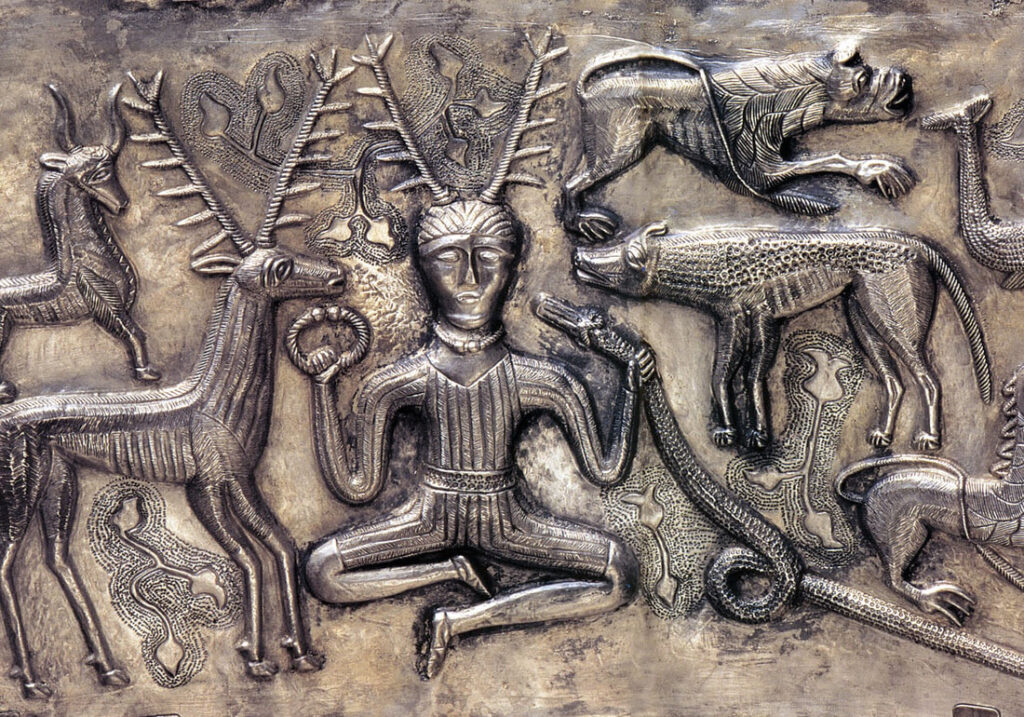
If we are to relate Cernunnos to a God, and not a priest of shaman, He is an extremely important one to the Celts considering the frequency of His iconography and the addition of so many status symbols. It can be concluded that He is the Celtic King of the Gods, Who ruled along with His wife, the Green Lady, often depicted seated beside Him holding a cornucopia, sometimes antlered as well. Over the next few centuries numerous Cernunnos idols and depictions appear depicting various things like feeding horned serpents, carrying cornucopia-like bags of wealth-giving substances, and the familiar stag and bull, symbols of status and wealth. To the Romans, who were experts in syncretism, He was identified as Dis Pater, or Pluto, as recounted by Julius Caesar in his “Gallic Wars”. Because of this, it is unlikely the Romans would have noticed any specific Faunus-like traits that would have put Him in the realm of Pan.
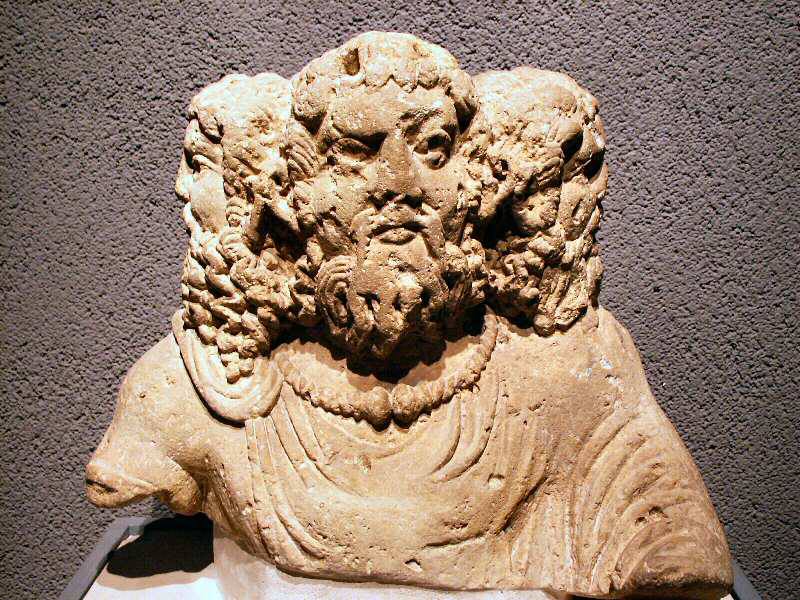
And that is all we know about Cernunnos. There are literally zero myths or legends about Him, zero accounts of cult worship, festivals, or practice. We have no references to what His actual functions are outside of what we can tell from iconography, but we do know those who witnessed and recorded Celtic cult saw a strong resemblance, not in Pan, but in Pluto so His “Lord of Animals” role may have come second to His role as giver of wealth and abundance. In fact, the two Gods couldn’t be more different. For one, Pan has the horns of a goat, and Cernunnos has the antlers of a stag. Goat horns grow throughout the life of the animal, while antlers are shed every year. This is a great choice for a solar God of abundance and renewal like Cernunnos, symbolically shedding His antlers with the seasons, accompanied by His solar horned serpent. Despite His speculated role in fertility, Cernunnos is also a rather modest God, always depicted as clothed, even when He is among nude revelers. Pan, on the other hand, is almost always nude, and more often in a state of arousal.
Within the realm of witchcraft, each God has Their own backstory. Pan, Whose name was and is indeed invoked in magic of the Mediterranean, has a long history within witch folklore. In His earlies appearances we find Him conjured in the PGM (Papyri Graecae Magicae, or Greek Magical Papyri) such as PGM IV. 2145-2240 for divine assistance, PGM IV. 2241-2358 to the waning Moon, PGM IV. 2441-2621 for attraction, PGM IV. 2967-3006 for the power of plants, and PGM IV. 3255-74 to Typhon (Pan is named as Mendes). His association with prophecy and oracles is well attested to, and to the Orphics Pan represented a union of all the elements, the embodiment of the entire Cosmos and the power it contains.
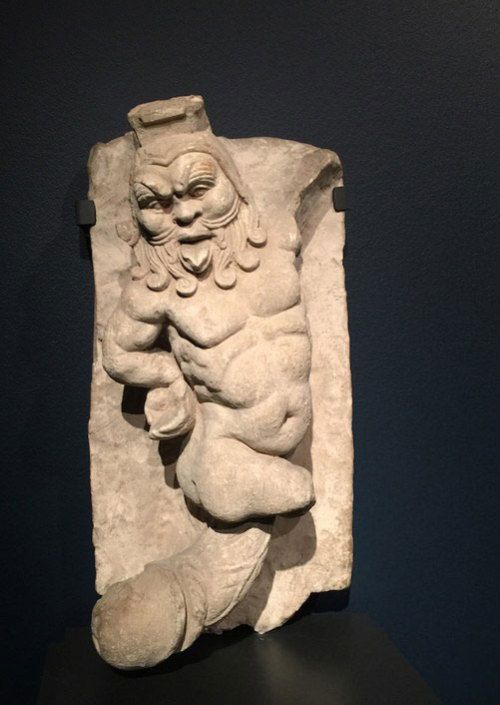
Around the 3rd century CE the early Church began to demonize Pan, and condemn Him as their embodiment of evil, specifically due to His associations with perverse and unrestrained sexuality. The iconography of the Devil had not really been established and many attributes from many Gods were synonymous with this figure. These early Christians viewed pretty much every pagan God as the Devil, but particularly Gods with animalistic forms such as the Egyptian Bes, and Pan Himself. In fact, even into the Medieval period we see depiction of the Devil that are a fusion of various pagan elements, from the sinister grin of Bes, to Pan’s goat legs and horns (although more common were clawed feet at the time, probably coming from the Gods of the Middle East). No God was off limits to demonization, and the more attached to Nature and human sexuality They were, the more They were incorporated into the imagery.

But, despite some theories, we know for a fact that early Christians directly linked Pan and His satyrs with the Devil. Not only does the Bible originate in the area of Pan’s worship, coming from the Phoenician empire around the Mediterranean, but it specifically mentions satyrs (original Hebrew Se’irem or singular Sa’ir in Isaiah 13:21, Isaiah 34:14, Leviticus 17:7), as well as Pan’s city located at the base of Mount Hermon on the border of Syria and Lebanon, Paneas to the ancients, now named Banias, is mentioned as “Caesarea Philippi” in Matthew 16:13. In fact, perhaps the most adamant advocate for the demonization of Pan, the 3rd century bishop Eusebius of Caesarea mentions Him quite extensively as an evil demon, particularly in regards to His horns and hooves. In fact, Pan and His goats were seen as in direct conflict with Jesus and his sheep. In Matthew 25:32, a direct comparison is made between the saved represented by sheep, and the damned represented by goats, a theme we find in quite possibly the oldest depiction of the Devil as a blue angel surrounded by goats in a 6th century mosaic called “Christ the Good Shepherd”.
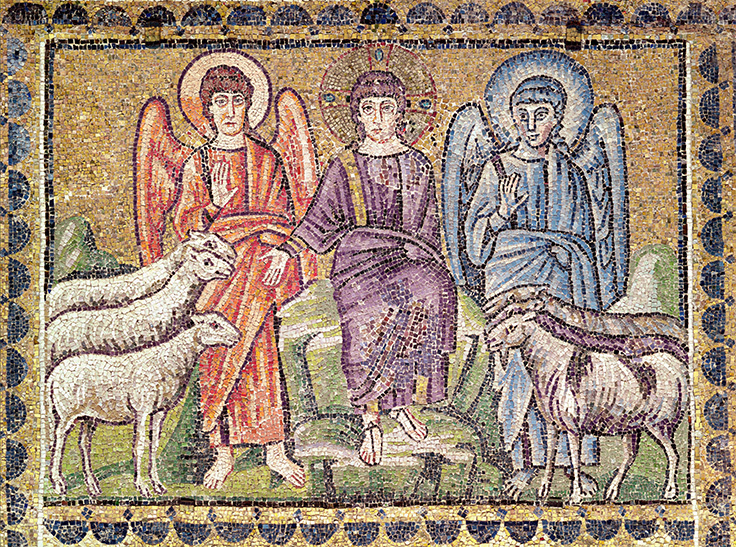
But it is in the early modern period beginning in the 1500s at the height of the Inquisition that we really start to see Pan’s influence on witchcraft as the Devil. Many accounts of the Akellare or, the Witches Sabbath depict witches dancing around a large black goat, or humanoid goat. The carnal nature of the Witches Sabbath, and the fornication with the Devil as a goat are perhaps direct links to Pan, rather than Dionysos as some propose. The Devil is described as hairy, with the massive horns and hooves of a goat, and an obscene large phallus. It is also mentioned that witches dance around Him as He plays the flute for them, another tell tale sign that this is indeed a reference to Pan. He is a being of lust granting power, giving His witches the ability to perform curses and miracles, very reminiscent of Pan in the ancient world.
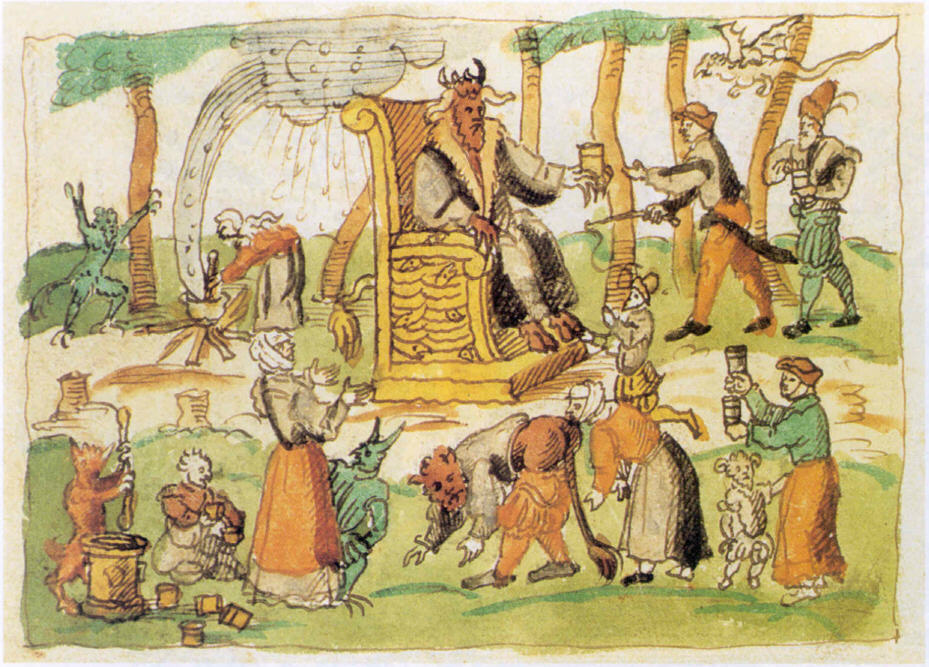
Moving into the height of witch folklore of the early modern period or before, we are left wanting to find evidence that Cernunnos was ever associated with witchcraft in any form. Early Church records from Western Europe are entirely lacking regarding mentions of any local Horned-Gods, or the worship of antlered or animal formed Gods. The only condemnation came in the form of revelers celebrating the remnants of pagan rituals wearing the skins and headdresses of various animals, including the stag such as the 6th century St. Caesarius of Arles who describes the celebrations, or the later 6th century Council of Auxerre that condemned the newly converted pagans from dressing in costumes of animals such bulls and stags in the beginning of January. This does bear some resemblance to the celebration of the Basque Pan/Cernunnos/Janus God Janicot Who is associated with witchcraft and the Akellare. But other than these obscure references, Cernunnos is never specifically demonized and stags aren’t associated with evil or lechery.
Within the realm of modern paganism and witchcraft religion, primarily in traditions like Wicca and its offshoots, Cernunnos is THE Horned God. But why is that? Well, to start, the Horned God, although resembling Cernunnos, really has nothing to do with the Stag God at all. In fact, He is more Pan that Cernunnos. The primary source of this confusion is none other than Margaret Murray. In her book “The God of the Witches” Murray basically takes every Horned God throughout history, mashes Them together indiscriminately, and refers to Them as one single Horned God. This allows her to basically fabricate myth many would later associate with Cernunnos. He seems to become the crossroads of hero figures like Herne of Britain, and Pan of the Greeks. In fact, in its earliest incarnation, Wicca was more heavily influenced by Greco-Roman myth being inspired by ‘Aradia: Gospel of the Witches” by Charles Leland. For the Moon Goddess, Diana was the obvious choice, for the God, we would find Pan. But Gerald Gardner had a bit of a British identity crisis. He wanted his religion to resonate with the Celtic Europe he was surrounded by. So he took Murray’s Cernunnos Horned God, distinctly Celtic, yet called Herne, and made Him the primary Lord of Wicca. Interestingly he kept all of Pan’s attributes, such as the erect phallus and pan pipes. Cernunnos, with His lack of mythology or historical cult, and lack of identification with the Devil, something Gardner was keen on distancing himself and the religion from, pretty much won Him the title of God of the Witches. Wicca then popularized the misinformation from Murray’s book, and it stuck in the New Age witch mindset, a mindset that endures and thrives today.

The modern witch community often claims all Horned Gods represent one single God, not knowing this does a great disservice to these individual deities, each of Whom serve very different purposes. Simply because They are horned or antlered, that does not make Them generic phallic archetypes, faux Panes so to speak. They each have Their own identities, Their own imagery, and Their own culture, even if Their lore was lost to history. We should not disrespect Them by saying Pan and Cernunnos are the same because They are very clearly not. It goes without saying, if you want to serve a pan-European Horned God, like the God of Wicca, that is totally valid and real, however be aware you are not serving Pan or Cernunnos, but something else, and that is ok. They do not all NEED to be the same. Understanding Them, Their histories, and Their function in Nature will only lead you to the betterment of the self.

This was a very interesting, and informative read. Thanks Jeff, once again you cleared up some confusion with the horned one. I do love Pan.
I am however finding a strong attraction to satan, It feels like I’m being drawn to him. But I don’t want to disrupt my devotion to Pan. Ill figer it out. Im human, im sure i can do both with some work. enjoy your day
Thanks for the info 😉
Finally somebody who understands our Hellenic Tradition properly without misunderstanding. Thanks for coming closer to our Theology and explaining it. There is unbelievably much into it than just “that god is the god of wine” and “that goddess is of the moon”. Thank you
THANK YOU! It irks me when some people claim some form of Universalist religion (“all paths lead to the same source”) as it is almost always bullshit, which shows NO RESPECT for the integrity of each distinct culture or their practises or traditions – syncretizations & synchronicties are somewhat inevitable, yet saying “it’s all the same” erases the uniqueness of everything – I lived in China 2004-2015, at the time many Chinese people had never seen any Europeans other than on TV or in films – so to them, I represented ALL Europeans, indiscriminately . . . with a little THINKING – it became apparent that was not so . . .
I enjoyed reading this! Although I will respectfully disagree with some of the points made. I believe the name Cernunnos is more of an epithet than a secret name or a name referring to a hard specific Gaulish God, that way one can use the name Cernunnos to refer to all forms of the Horned One. The idea that all Gods are one God actually became popular with Dion Fortune and Theosophy, but she did not invent the philosophy or the mystery. This idea was extremely popular in the mysteries of Alexandria, Egypt and around Europe and the Mediterranean. Like how Isis not only absorbed all Egyptian Goddesses, but also All Greek, Roman, and a few Celtic Goddesses through Roman presence in Western Europe. I do not believe this doctrine erases culture like some of the previous comments have stated but quite the opposite. The purpose is to acknowledge that the deities are all different cultural incarnations of the same spiritual powers. Not to say that Dionysus is Osiris is Tammuz or vice versa, but all 3 carry strong similarities and share some of the same mysteries and may share common origins. Ultimately it becomes the mysteries of the Horned God that are important, and Pan, Herne, and Osiris are different cultural lenses (Greek, British, Egyptian) and societal lenses (shepherding, hunting, agriculture) that we can view Him in. That’s just my take. But I always enjoy reading your work!
Hi Alex! I appreciate your comment! I want to take the time to address your points. First, Cernunnos does not pertain to all Horned Gods as you suggest. If you look I break it down that the root name is specific to antlers. We call this etymology Gallo-Roman because it is a fusion of two root words: the Latin “cornibus” with the Gaulish “karnon”. How do we know this? Simply put, because the figure has antlers and not horns. They wouldn’t have used “cornu” as the root because that would have needed to involve goat horns, which the Pillar’s image didn’t have. It is why depictions of Gods like Faunus or Pan never bear the name or epithet “Cernunnos”, Gods Who actually do have descriptors for this, such as Pan Aigokeros which refers to Him as “Goat-Horned”. The Romans were experts at syncretizing their Gods with those of foreign cultures and if “Cernunnos” referenced all Horned Gods, they would have certainly treated this God as Faunus, but we know for a fact they didn’t. All the names of all the Gods are more or less titles like this so it wouldn’t be uncommon for Cernunnos to be a singular name or epithet.
Which leads into the next point: God names as epithets. Isis did and is still linked with many (not all) Goddesses of the Mediterranean, but not as these Goddesses Themselves, but using Them as epithets. For example, we have Isis Fortuna, Isis Aphrodite, and even an Isis linked with Demeter. But, these were cult specific epithets and never wide reaching. How do we know this? Because the cults of these Goddesses existed and thrived alongside the Isis cults. It wouldn’t be Isis AS Fortuna, or Isis AS Aphrodite, but Isis acting as these Goddesses. This is something even the Egyptian Gods do, Isis sometimes has the horns of Hathor, or the wings of Ma’at, but these Goddesses were and are still individual Goddesses in Their own right.
Dion Fortune was among those who held this sentiment , yes, but as stated I am referring specifically to the idea that all European Horned Gods are linked, a false theory Margaret Murray outlines in “God of the Witches”. This blog doesn’t reference any specific Dion Fortune material so there is no reason I would have to cite her.
And to finish, all Horned Gods are not different aspects of one power. Cernunnos shares absolutely nothing in common with Pan from what His iconography shows. This is something that just is not true. They also share different Indo-European roots, and serve extremely different cult function, again, based on not only the iconography, but the association the Romans made between Cernunnos and Dis Pater that is very plainly documented.
This is a fascinating subject, and the Pan/ Cernunnos connection is one I have been studying for years, always coming to the same conclusion: They are not the same, and They don’t need to be the same.
Hello! Thanks for writing on this. I think we get caught up in wanting to argue myth when it’s myth. I believe that by creating new myths about these beings we have created Gods and Goddesses, and it’s OK. Cerridwen was never a Goddesses from ancient myth, and yet the new myths created by her own people and paganism has deified her. And by that creation and worship she IS a Goddess. I believe the same can be said for Cernunnos. We have no idea who he was or what he represented. We are merely guessing, and folks argue about it. For me, my experience of him is highly personal, and he shows up to me in different forms and in different ways to provide healing and guidance. There is no right or wrong, here. 🙂 Peace to you.
Thanks, Jeff! I enjoyed reading this immensely! I have always been drawn to Cernunnos, but at the same time, also drawn to a quite different Horned God who speaks to me in a quite different way. I appreciate the opportunity to learn more.